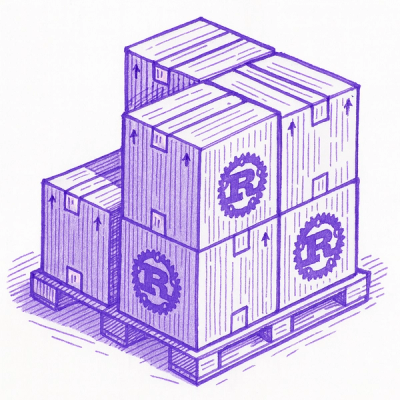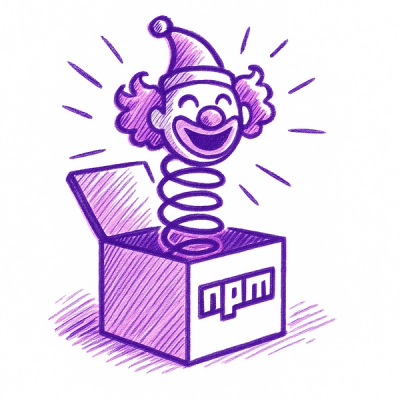
Security News
Open Source Maintainers Feeling the Weight of the EU’s Cyber Resilience Act
The EU Cyber Resilience Act is prompting compliance requests that open source maintainers may not be obligated or equipped to handle.
= websocket-protocol { }[http://travis-ci.org/faye/websocket-protocol-ruby]
}[http://travis-ci.org/faye/websocket-protocol-ruby]
This module provides a complete implementation of the WebSocket protocols that can be hooked up to any TCP library. It aims to simplify things by decoupling the protocol details from the I/O layer, such that users only need to implement code to stream data in and out of it without needing to know anything about how the protocol actually works. Think of it as a complete WebSocket system with pluggable I/O.
Due to this design, you get a lot of things for free. In particular, if you hook this module up to some I/O object, it will do all of this for you:
This library was originally extracted from the {Faye}[http://faye.jcoglan.com] project but now aims to provide simple WebSocket support for any Ruby server or I/O system.
== Usage
To build either a server-side or client-side socket, the only requirement is that you supply a +socket+ object with these methods:
Server-side sockets require one additional method:
=== Server-side
To handle a server-side WebSocket connection, you need to check whether the request is a WebSocket handshake, and if so create a protocol handler for it. You must give the handler an object with the +env+, +url+ and +write+ methods. A simple example might be:
require 'websocket/protocol' require 'eventmachine'
class WS attr_reader :env, :url
def initialize(env)
@env = env
secure = Rack::Request.new(env).ssl?
scheme = secure ? 'wss:' : 'ws:'
@url = scheme + '//' + env['HTTP_HOST'] + env['REQUEST_URI']
@handler = WebSocket::Protocol.rack(self)
env['rack.hijack'].call
@io = env['rack.hijack_io']
EM.attach(@io, Reader) { |conn| conn.handler = @handler }
@handler.start
end
def write(string)
@io.write(string)
end
module Reader
attr_writer :handler
def receive_data(string)
@handler.parse(string)
end
end
end
To explain what's going on here: the +WS+ class implements the +env+, +url+ and write(string) methods as required. When instantiated with a Rack environment, it stores the environment and infers the complete URL from it. Having set up the +env+ and +url+, it asks WebSocket::Protocol for a server-side handler for the socket. Then it uses the Rack hijack API to gain access to the TCP stream, and uses EventMachine to stream in incoming data from the client, handing incoming data off to the handler for parsing. Finally, we tell the handler to +start+, which will begin sending the handshake response. This will invoke the WS#write method, which will send the response out over the TCP socket.
Having defined this class we could use it like this when handling a request:
if WebSocket::Protocol.websocket?(env) socket = WS.new(env) end
The handler API is described in full below.
=== Client-side
Similarly, to implement a WebSocket client you just need an object with +url+ and +write+ methods. Once you have one such object, you ask for a handler for it:
handler = WebSocket::Protocol.client(socket)
After this you use the handler API as described below to process incoming data and send outgoing data.
=== Handler API
Handlers are created using one of the following methods:
handler = WebSocket::Protocol.rack(socket, options) handler = WebSocket::Protocol.client(socket, options)
The +rack+ method returns a handler chosen using the socket's +env+. The +client+ method always returns a handler for the RFC version of the protocol with masking enabled on outgoing frames.
The +options+ argument is optional, and is a hash. It may contain the following keys:
All handlers respond to the following API methods, but some of them are no-ops depending on whether the client supports the behaviour.
Note that most of these methods are commands: if they produce data that should be sent over the socket, they will give this to you by calling socket.write(string).
==== handler.onopen { |event| }
Sets the handler block to execute when the socket becomes open.
==== handler.onmessage { |event| }
Sets the handler block to execute when a message is received. +event+ will have a +data+ attribute containing either a string in the case of a text message or an array of integers in the case of a binary message.
==== handler.onclose { |event| }
Sets the handler block to execute when the socket becomes closed. The +event+ object has +code+ and +reason+ attributes.
==== handler.start
Initiates the protocol by sending the handshake - either the response for a server-side handler or the request for a client-side one. This should be the first method you invoke. Returns +true+ iff a handshake was sent.
==== handler.parse(string)
Takes a string and parses it, potentially resulting in message events being emitted (see +onmessage+ above) or in data being sent to socket.write. You should send all data you receive via I/O to this method.
==== handler.text(string)
Sends a text message over the socket. If the socket handshake is not yet complete, the message will be queued until it is. Returns +true+ if the message was sent or queued, and +false+ if the socket can no longer send messages.
==== handler.binary(array)
Takes an array of byte-sized integers and sends them as a binary message. Will queue and return +true+ or +false+ the same way as the +text+ method. It will also return +false+ if the handler does not support binary messages.
==== handler.ping(string = '', &callback)
Sends a ping frame over the socket, queueing it if necessary. +string+ and the +callback+ block are both optional. If a callback is given, it will be invoked when the socket receives a pong frame whose content matches +string+. Returns +false+ if frames can no longer be sent, or if the handler does not support ping/pong.
==== handler.close
Initiates the closing handshake if the socket is still open. For handlers with no closing handshake, this will result in the immediate execution of the +onclose+ handler. For handlers with a closing handshake, this sends a closing frame and +onclose+ will execute when a response is received or a protocol error occurs.
==== handler.version
Returns the WebSocket version in use as a string. Will either be hixie-75, hixie-76 or hybi-$version.
==== handler.protocol
Returns a string containing the selected subprotocol, if any was agreed upon using the Sec-WebSocket-Protocol mechanism. This value becomes available after +onopen+ has fired.
== License
(The MIT License)
Copyright (c) 2009-2013 James Coglan
Permission is hereby granted, free of charge, to any person obtaining a copy of this software and associated documentation files (the 'Software'), to deal in the Software without restriction, including without limitation the rights to use, copy, modify, merge, publish, distribute, sublicense, and/or sell copies of the Software, and to permit persons to whom the Software is furnished to do so, subject to the following conditions:
The above copyright notice and this permission notice shall be included in all copies or substantial portions of the Software.
THE SOFTWARE IS PROVIDED 'AS IS', WITHOUT WARRANTY OF ANY KIND, EXPRESS OR IMPLIED, INCLUDING BUT NOT LIMITED TO THE WARRANTIES OF MERCHANTABILITY, FITNESS FOR A PARTICULAR PURPOSE AND NONINFRINGEMENT. IN NO EVENT SHALL THE AUTHORS OR COPYRIGHT HOLDERS BE LIABLE FOR ANY CLAIM, DAMAGES OR OTHER LIABILITY, WHETHER IN AN ACTION OF CONTRACT, TORT OR OTHERWISE, ARISING FROM, OUT OF OR IN CONNECTION WITH THE SOFTWARE OR THE USE OR OTHER DEALINGS IN THE SOFTWARE.
FAQs
Unknown package
We found that websocket-protocol demonstrated a not healthy version release cadence and project activity because the last version was released a year ago. It has 1 open source maintainer collaborating on the project.
Did you know?

Socket for GitHub automatically highlights issues in each pull request and monitors the health of all your open source dependencies. Discover the contents of your packages and block harmful activity before you install or update your dependencies.

Security News
The EU Cyber Resilience Act is prompting compliance requests that open source maintainers may not be obligated or equipped to handle.

Security News
Crates.io adds Trusted Publishing support, enabling secure GitHub Actions-based crate releases without long-lived API tokens.

Research
/Security News
Undocumented protestware found in 28 npm packages disrupts UI for Russian-language users visiting Russian and Belarusian domains.